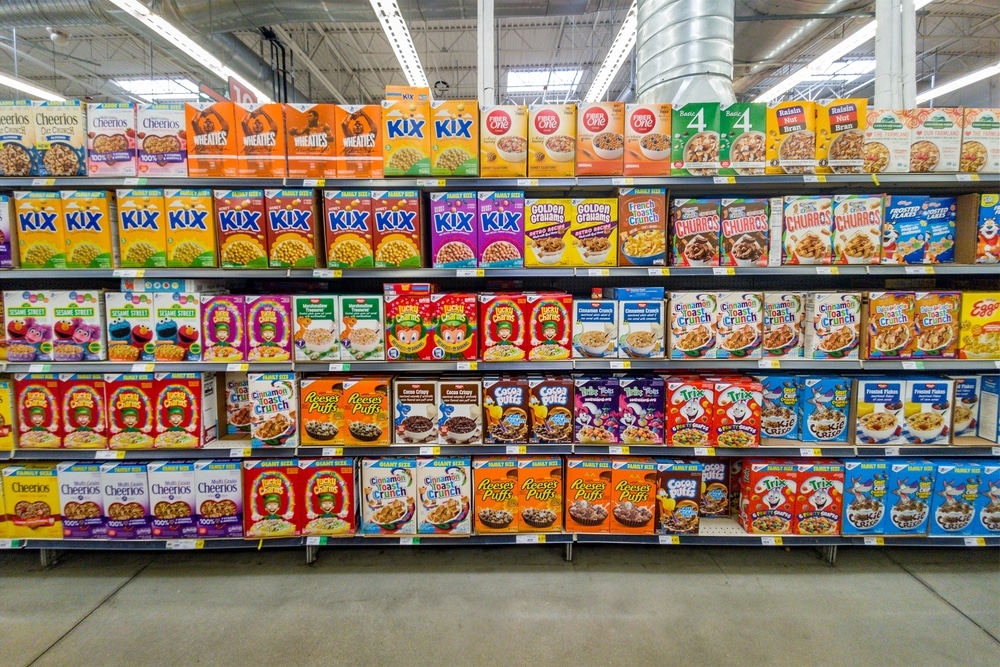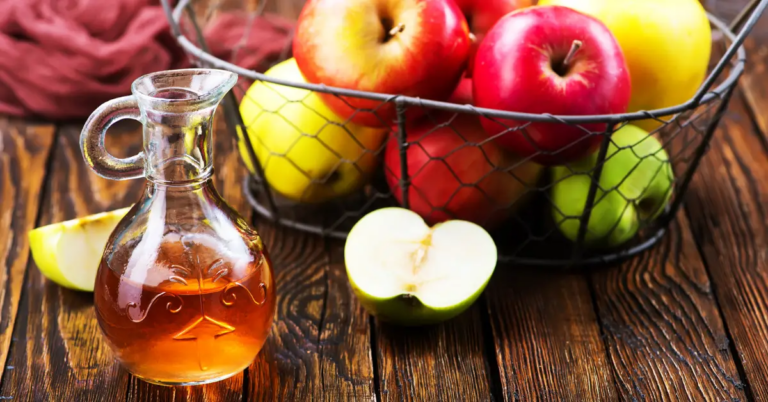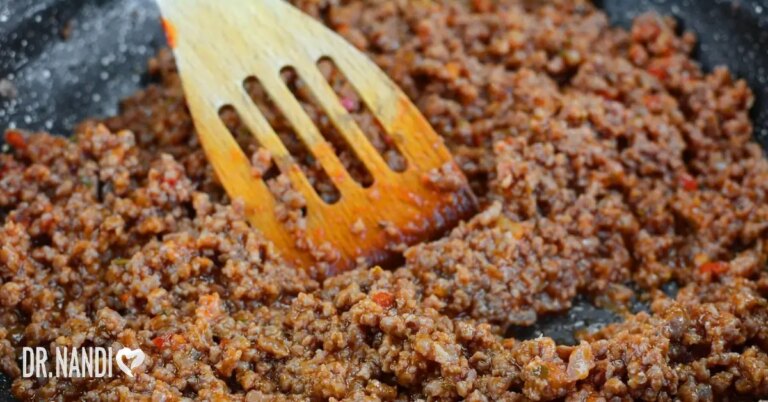In our fast-paced world, breakfast cereals have become a go-to option for many seeking a quick and easy meal to start their day. With bright packaging and claims of being “heart-healthy” or “packed with vitamins,” it’s no wonder that breakfast cereals are a staple in many households. However, despite their convenient allure, not all breakfast cereals are as wholesome as they seem. In fact, some of the most popular brands are laden with sugars, harmful additives, and ingredients that can do more harm than good. If you’re looking to maintain a healthy lifestyle, understanding which breakfast cereals to avoid is crucial.
Moreover, the deceptive marketing tactics used by cereal manufacturers often overshadow the hidden dangers lurking within these boxes. While these cereals may promise energy and nutrition, the reality is that many are filled with empty calories that can lead to energy crashes, weight gain, and other long-term health issues. Before you pour that next bowl, it’s worth taking a closer look at what you’re actually consuming—and why it might be time to rethink your breakfast choices.
The Hidden Dangers of Popular Breakfast Cereals
When we think of breakfast cereals, we often associate them with convenience and a nutritious start to the day. But the reality is far from this ideal. Many popular breakfast cereals are packed with ingredients that can negatively impact your health. High sugar content, artificial additives, and even harmful chemicals like glyphosate are common in many well-known brands. These ingredients not only diminish the nutritional value of your morning meal but also pose potential health risks that can affect your well-being over time.
The sugar content in these cereals is particularly concerning. Some cereals contain more than 50% sugar by weight, which can lead to a rapid spike in blood sugar levels. This spike is often followed by a crash, leaving you feeling sluggish and craving more sugar throughout the day. Over time, this pattern can contribute to weight gain, insulin resistance, and even type 2 diabetes. [1,2]
In addition to sugar, many breakfast cereals contain artificial dyes, preservatives, and genetically modified organisms (GMOs). These additives are linked to various health concerns, including hyperactivity in children, allergic reactions, and an increased risk of chronic diseases such as cancer and heart disease. [3,4]

Toxic Ingredients Lurking in Breakfast Cereals
Beyond the manufacturing process, the ingredients found in many breakfast cereals present another significant health concern. While the packaging may highlight the presence of whole grains or added vitamins, a closer look at the ingredient list reveals a troubling mix of toxic substances that can have long-term effects on your health. Understanding these ingredients is essential for making informed decisions about what you put on your breakfast table.
High Sugar Content
One of the most alarming aspects of many breakfast cereals is their high sugar content. Often marketed to children, these cereals can contain more than 40% sugar by weight. Consuming such high levels of sugar, especially at the start of the day, can lead to energy spikes followed by crashes, promoting a cycle of sugar cravings that can contribute to obesity, insulin resistance, and type 2 diabetes.
Glyphosate and GMOs
Another hidden danger in breakfast cereals is the presence of glyphosate, a herbicide commonly used in the cultivation of genetically modified organisms (GMOs). Glyphosate has been linked to numerous health issues, including cancer, dementia, and diabetes. Despite these risks, glyphosate residues are often found in non-organic cereals, particularly those made from corn and other GMO crops.
Artificial Food Dyes and Preservatives
Many cereals are also loaded with artificial food dyes and preservatives, which pose their own set of health risks. Dyes such as Red 40, Yellow 5, and Yellow 6 are derived from petroleum and have been associated with hyperactivity in children, allergic reactions, and even cancer. Preservatives like Butylated Hydroxytoluene (BHT) and Butylated Hydroxyanisole (BHA) are used to extend the shelf life of cereals but are also linked to endocrine disruption and an increased risk of cancer.
Hydrogenated Oils
Hydrogenated oils, often used in cereals to maintain texture and shelf stability, contain trans fats, which are notorious for their negative impact on heart health. Consuming trans fats is associated with an increased risk of heart disease, stroke, and other serious conditions. Despite growing awareness of these dangers, hydrogenated oils still find their way into many popular cereal brands.
The presence of these toxic ingredients underscores the importance of carefully reading labels and choosing cereals that prioritize natural, wholesome ingredients. By avoiding products with high levels of sugar, harmful chemicals, and artificial additives, you can protect your health and start your day on a better note.

10 Breakfast Cereals to Avoid: The Worst Offenders
Not all breakfast cereals are created equal, and some are worse for your health than others. While many brands promote their cereals as healthy options, a closer look at their nutritional content and ingredients reveals a different story. Here are some of the worst offenders you should avoid if you’re serious about maintaining a healthy lifestyle.
- Honey Smacks: Honey Smacks may seem harmless with their sweet taste and low calorie count, but they are quite deceptive. This cereal contains a considerable 18 grams of sugar per serving, making it 50% sugar by weight. With just 2 grams of fiber and 2 grams of protein per 36-gram serving, it offers limited nutritional value. The high sugar content can contribute to an increased risk of heart disease, diabetes, and other health-related issues, making Honey Smacks a cereal to be cautious about in a balanced diet. [5]
- Cinnamon Toast Crunch: Cinnamon Toast Crunch may be beloved for its sweet cinnamon-spiced flavor, but it’s not the best choice for a nutritious breakfast. Each one-cup serving contains 12 grams of sugar and 4 grams of fat, contributing to its appealing taste but low nutritional profile. While it provides 3 grams of fiber and 2 grams of protein, the high sugar content still poses a risk for energy spikes and subsequent crashes. This can lead to increased cravings and less satisfaction throughout the day. [6]
- Oreo O’s: Oreo O’s, as the name might hint, align more with dessert territory than breakfast fare. Each 40-gram serving packs a substantial 17 grams of sugar, making it rich in empty calories while offering scant nutritional benefits. With only 1 gram of fiber and a mere 1 gram of protein, it lacks the essential nutrients needed for a balanced morning meal. Coupled with 210 mg of sodium, Oreo O’s should be considered more of a sporadic indulgence rather than a staple in your daily diet. [7]
- Fruit Loops: Kellogg’s Fruit Loops may be visually appealing with their bright colors, but they pack a less-than-ideal nutritional punch. Each 39-gram serving contains 12 grams of sugar, making it about 31% sugar by weight. While this cereal is free from partially hydrogenated oils and thus lacks trans fats, its high sugar content remains a concern. Additionally, it offers minimal fiber and protein, with only 2 grams of each per serving, and contains 210 mg of sodium. The combination of high sugar and low nutritional value places Fruit Loops among the less desirable breakfast cereals.[8]
- Cap’n Crunch Crunch Berries: Despite its vibrant colors and fruity flavors, it’s far from a wholesome start to the day. This cereal comes loaded with 17 grams of sugar per cup, which is a significant portion of its overall carbohydrate content. Offering less than 1 gram of dietary fiber and only 2 grams of protein per serving, it falls short in delivering essential nutrients. Additionally, the presence of artificial colors like Red 40, Yellow 5, and Blue 1 adds to the concerns, diminishing its appeal. With a sodium level of 290 mg per serving, Cap’n Crunch Crunch Berries poses a less-than-ideal choice for those seeking a nutritious breakfast option.[9]
- Honey Maid S’mores Cereal: This popular brand might evoke fond memories of campfire treats, but its nutritional profile should give health-conscious consumers pause. Each 40-gram serving delivers 160 calories and contains a high 17 grams of sugar, which makes up more than half of its total carbohydrate content. Ingredients such as marshmallows, corn syrup, molasses, honey, and various forms of sugar contribute to its high sugar content, while artificial flavors and preservatives like BHT further detract from its healthfulness. [10]
- Corn Pops The playful crunch and popping experience it offers falls short on the nutrition front. It has 15 grams of sugar per serving, making up a significant portion of its 36 grams of total carbohydrates, with absolutely no fiber. The use of annatto extract for coloring also raises concerns, as it has been associated with allergic reactions ranging from mild hives to severe anaphylaxis. While Corn Pops might be fun to eat, their nutritional profile and potential allergenic effects make them a less advisable choice for everyday breakfast. [11]
- Raisin Bran: Raisin Bran is often touted as a healthy breakfast choice, yet a detailed examination reveals a less favorable nutritional profile. Each 55-gram serving contains 19 grams of sugar, positioning it as one of the more sugar-heavy cereals available. While it provides 4 grams of fiber and 4 grams of protein, which are beneficial, the high sugar content—especially problematic if it includes high-fructose corn syrup—can substantially offset these advantages. Additionally, with 200 mg of sodium per serving, Raisin Bran’s overall nutritional benefits are further compromised, making it a less ideal option for those seeking a truly healthy cereal. [12]
By steering clear of these cereals, you can avoid the hidden sugars, harmful fats, and artificial additives that contribute to poor health. Instead, focus on breakfast options that are rich in whole grains, low in sugar, and free from artificial ingredients.

My Personal RX on Healthier Breakfast Habits
As a doctor, I’ve seen firsthand how poor dietary choices can have a ripple effect on our overall health. The foods we consume, especially at the start of the day, play a critical role in setting the tone for our physical and mental well-being. When it comes to breakfast cereals, it’s not just about what tastes good or what’s convenient; it’s about making choices that support your long-term health goals. Here are some tips to help you make better decisions for a healthier lifestyle:
- Prioritize Whole Grains: Choose cereals made from whole grains like oats, barley, or quinoa. These grains are rich in fiber, which supports digestion and helps regulate blood sugar levels throughout the day.
- Check the Sugar Content: Always read the labels and opt for cereals with less than 5 grams of sugar per serving. Excess sugar can lead to energy crashes and increased cravings, affecting your mood and concentration.
- Incorporate Probiotics for Gut Health: Your gut health is directly linked to your overall well-being, including mental health. Consider adding MindBiotic to your routine, a supplement that optimizes the gut-brain axis through a combination of probiotics, prebiotics, and Ashwagandha KSM 66. This can enhance both your digestive and mental health.
- Avoid Artificial Additives: Steer clear of cereals with artificial colors, flavors, and preservatives. These additives can trigger allergic reactions, hyperactivity, and other health issues, particularly in children.
- Balance with Protein and Fiber: To keep your energy levels steady, pair your cereal with a source of protein, such as nuts or Greek yogurt, and ensure your cereal contains a good amount of fiber. This combination will help you stay full and focused longer.
- Limit Processed Ingredients: The more processed a cereal is, the less nutritional value it likely has. Choose cereals with minimal ingredients and no added chemicals or fillers.
- Choose Organic When Possible: Organic cereals are less likely to contain harmful pesticides like glyphosate. This is a simple step to reduce your exposure to potentially harmful chemicals.
- Stay Hydrated: Start your day with a glass of water before breakfast. Staying hydrated is crucial for digestion and overall health, setting a positive tone for your morning routine.
- Be Mindful of Portions: Even with healthier cereals, portion control is key. Overeating can lead to excess calorie intake, which can contribute to weight gain and other health issues.
- Understand the Gut-Brain Connection: Educate yourself on the powerful connection between your gut and brain. My latest book Heal Your Gut, Save Your Brain is an excellent resource to learn about this link and how a holistic approach to gut health can improve mental clarity and emotional balance.
Sources:
- Park, A. (2014, May 15). 12 breakfast cereals that are more than 50% sugar. TIME. https://time.com/97714/cereals-contain-50-sugar-by-weight/
- Study: Some cereals more than 50% sugar. (2013, April 17). TODAY.com. https://www.today.com/health/study-some-cereals-more-50-sugar-1c9404937
- Dey, S., & Nagababu, B. H. (2022). Applications of food color and bio-preservatives in the food and its effect on the human health. Food Chemistry Advances, 1, 100019. https://doi.org/10.1016/j.focha.2022.100019
- Rooney, J. (n.d.). Many “Natural” cereals use GM grains. Earth Eats: Real Food, Green Living – Indiana Public Media. https://indianapublicmedia.org/eartheats/natural-cereals-gm-grains.php
- Kellogg’s® Honey Smacks® cereal – SmartLabelTM. (n.d.). https://smartlabel.kelloggs.com/Product/Index/00038000148101
- Cinnamon Toast CrunchTM Cereal | Cinnamon Toast Crunch. (n.d.). Cinnamon Toast Crunch. https://www.cinnamontoastcrunch.com/products/cinnamon-toast-crunch
- Post Consumer Brands. (2024, May 6). Oreo O’s cereal | Post Consumer Brands. https://www.postconsumerbrands.com/brands/oreo-os/products/oreo-os-cereal/
- Kellogg’s® Froot Loops® Breakfast Cereal – SmartLabelTM. (n.d.). https://smartlabel.kelloggs.com/Product/Index/00038000144271
- Cap’n Crunch’s Crunch Berries®. (n.d.). Cap’n Crunch. https://www.capncrunch.com/products/cap-n-crunch-s-crunch-berries
- Post Consumer Brands. (2024a, May 6). HONEY MAID S’mores cereal | Post Consumer Brands. https://www.postconsumerbrands.com/brands/honey-maid/products/honey-maid-smores-cereal/
- Kellogg’s® Corn Pops® Cereal – SmartLabelTM. (n.d.). https://smartlabel.kelloggs.com/Product/Index/00038000198748
- Kellogg’s® Corn Pops® Cereal – SmartLabelTM. (n.d.). https://smartlabel.kelloggs.com/Product/Index/00038000198748












 Subscribe to Ask Dr. Nandi YouTube Channel
Subscribe to Ask Dr. Nandi YouTube Channel










